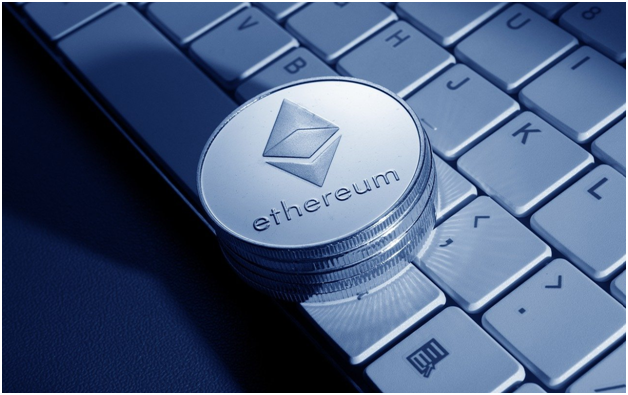Ethereum EIP-1559 Upgrade Explained: What You Need To know

Ethereum has ascended into the world of mainstream finance and has become equally important, if not more so than Bitcoin itself when it comes to the overall impact on the crypto industry. Without Bitcoin, Ethereum and crypto technology might never exist, but without Ethereum most altcoins wouldn’t exist either, and the entire crypto industry would look very different today.
Without Ethereum, there would be very few NFTs, if any. DeFi would barely be a thing, let alone the massive sector it has erupted into over the last couple of years. Today, these technologies are everywhere and growing by the day and it is all thanks to the innovation that Ethereum provides.
Although we’ve already said so much about what is built on top of Ethereum and why that is valuable, this guide is really about the value of Ethereum itself and what the latest EIP-1559 upgrade means for the young cryptocurrency technology.
Ethereum And Why An Upgrade Was Necessary
Ethereum is a blockchain-based supercomputer that includes smart contracts along with transactions. These smart contracts are executable code that is binding between two parties, and can be programmed for use within a variety of different decentralized applications.
Decentralized applications or Dapps, range from anything like DEX or automated market making protocols like Uniswap, to lending and borrowing platforms like Compound. Many DeFi applications also utilize a token that is an ERC-20 token built on Ethereum. NFTs are another type of Ethereum standard, ERC-721. The difference in these smart contacts is that they include a unique coin called a non-fungible token.
When these Dapps and tokens are used and users are transacting freely, this benefits the Ethereum ecosystem due to ETH being required as gas fees for transactions. When ETH demand is high, it can have a strong impact on price appreciation. However, the challenge has been thus far that when demand is high, fees would get out of control.
To address this recurring and costly situation, the ETH 2.0 upgrade has been rolling out in phases. As part of the overall upgrade and the more recent London Hard Fork, the Ethereum Improvement Proposal (EIP-1559) 1559 was also introduced.
EIP-1559 And $15 Million Per Day In ETH Burned
The EIP-1559 upgrade brings about some interesting changes to Ethereum’s tokenomics, which impacts the overall supply now and in the future. Moving forward, base fees will be algorithmically determined by the network. Rather than the base fee going to validators, it is instead burned. Users of Ethereum can “tip” a validator in ETH to speed up transactions by increasing their fees. This is at the user’s choice, however, and isn’t a function of the upgrade.
At the current price per ETH at more than $3,000 per token, and the daily burn rate, more than $15 million USD worth of ETH is being burned per day. This equates to roughly 5000 ETH per day being removed from the circulating supply. The importance here is that the rest of Ethereum developments also are contributing to an ongoing supply shock.
Another major part of the ETH 2.0 upgrade is the smart contract to be a validator itself. This requires each user to stake 32 ETH into the smart contract, which has contributed to more than 5% of the total Ethereum supply being locked up.
If Ether is being burned at such a rapid rate, so few are circulating due to the ongoing supply crunch from ETH 2.0 staking, and how much ETH is already locked up in DeFi applications and there is a recipe for FOMO potentially ahead.
Ethereum Joins Bitcoin In Institutional Portfolios
So while institutions were first focused on Bitcoin in a major way, once the world and especially Wall Street began to realize the potential that Ethereum packs due to the supporting sectors and technologies built on its back, the cryptocurrency could grow even further.
Since its inception, Ethereum has outpaced and outperformed Bitcoin in every way. The trend isn’t likely to stop any time soon, as the environment and usage of Ethereum simply cannot be matched. Even Bitcoin itself has had to join the Ethereum camp to get the full benefits of the crypto industry.
Due to the explosion of DeFi, a team of developers have created a smart contract and proof of reserve system that stores Bitcoin within a smart contract, and issues a wrapped Bitcoin (WBTC). This WBTC is in essence a tokenized form of Bitcoin that can be used within DeFi applications and other smart contracts. This makes even Bitcoin more beneficial and shows the true power of Ethereum.
How To Take Advantage Of Any Ethereum Uptrend Ahead
The Ethereum trend has been up, but given the demand and lack of supply of ETH, and the recent changes and upgrades to the blockchain, another dramatic leg up is possible. To get into position crypto enthusiasts can buy ETH or try trading Ethereum with leverage on PrimeXBT.
PrimeXBT recently added ETH and ERC-20 versions of USDT and USDC to its list of base margin account currencies, in addition to BTC. Using these assets, users can trade CFDs on crypto, forex, commodities, stock indices and more.
The fact that Ethereum has recently been added and ERC-20 version of stablecoins have been chosen is a sign of the adoption of these assets taking place across the industry. They have become a digital finance standard much like Bitcoin and it is only the beginning of their journey.
PrimeXBT also offers support for the COV utility token, another compelling ERC-20 token that shows just how powerful Ethereum can be. Built on Ethereum, this native crypto token to the Covesting ecosystem unlocks a variety of benefits for use within the Covesting copy trading module and the upcoming Covesting Yield Account system.
Covesting Yield Accounts will leverage the power of the Ethereum blockchain to connect to top DeFi protocols like Uniswap, and access APY generating tools through staking. COV token staking further ups the ante, by increasing the APY by up to 2x. Covesting Yield Accounts are due in Q3 2021, right around when the EIP-1559 update begins to show its impact.





